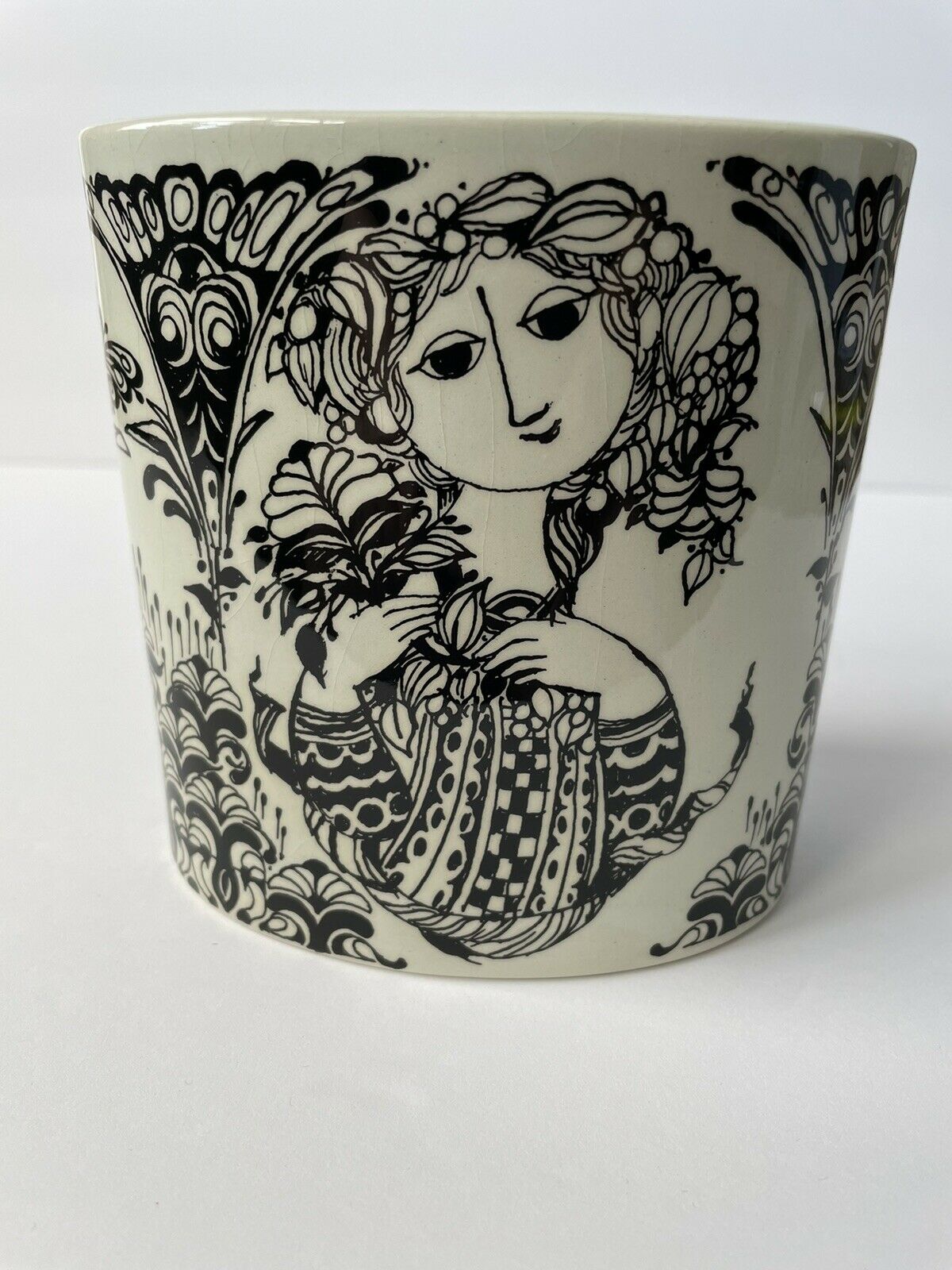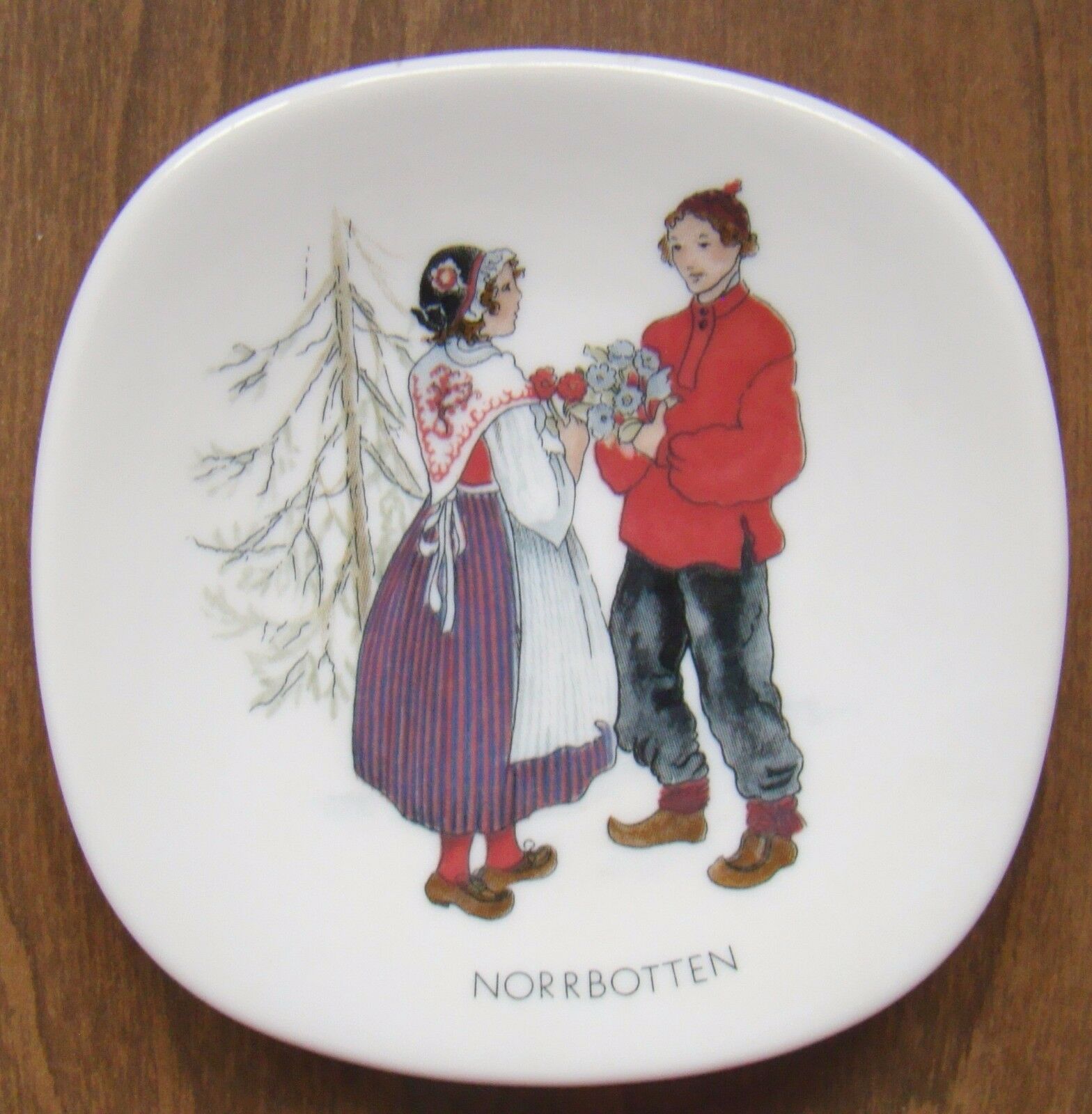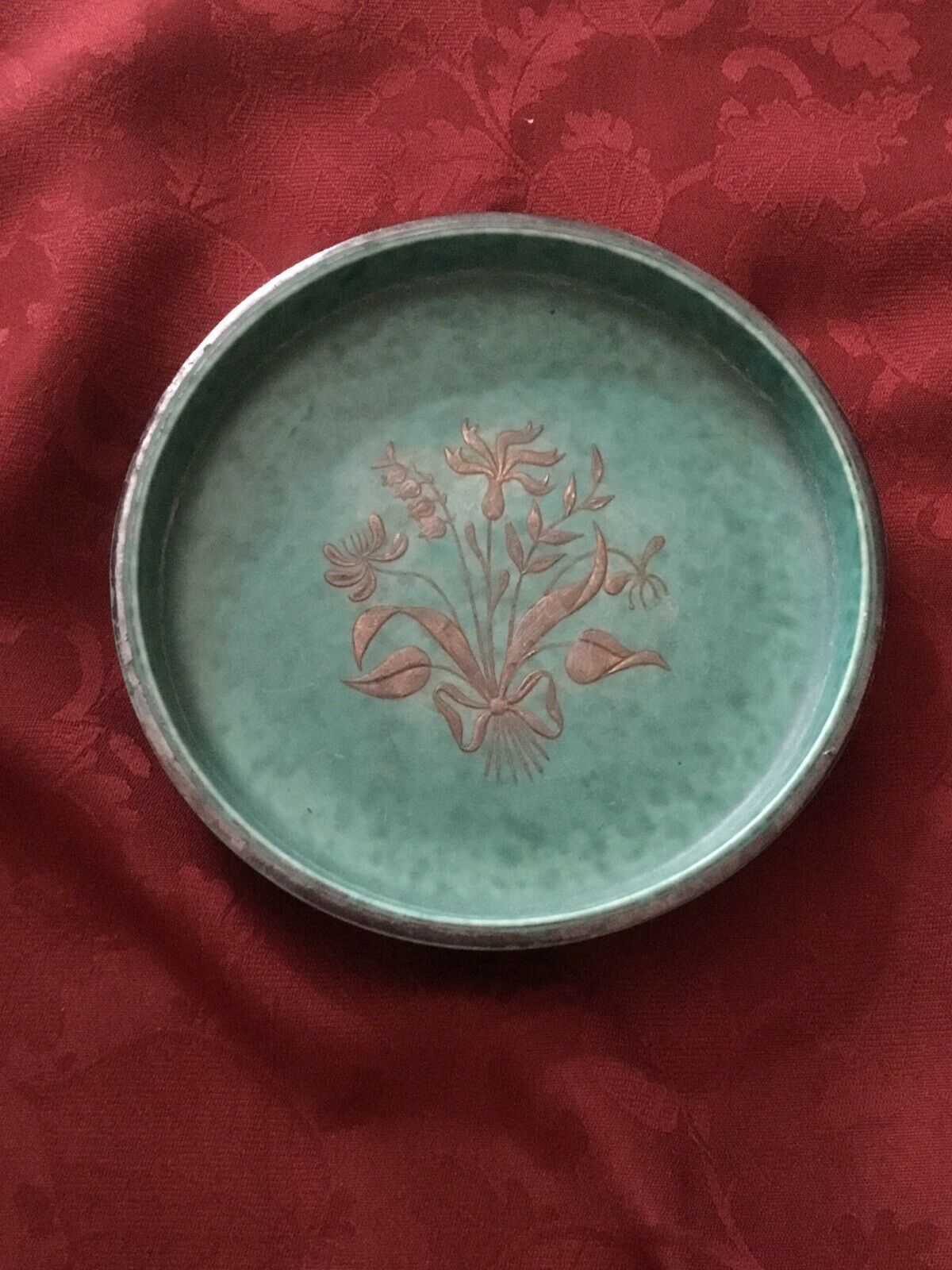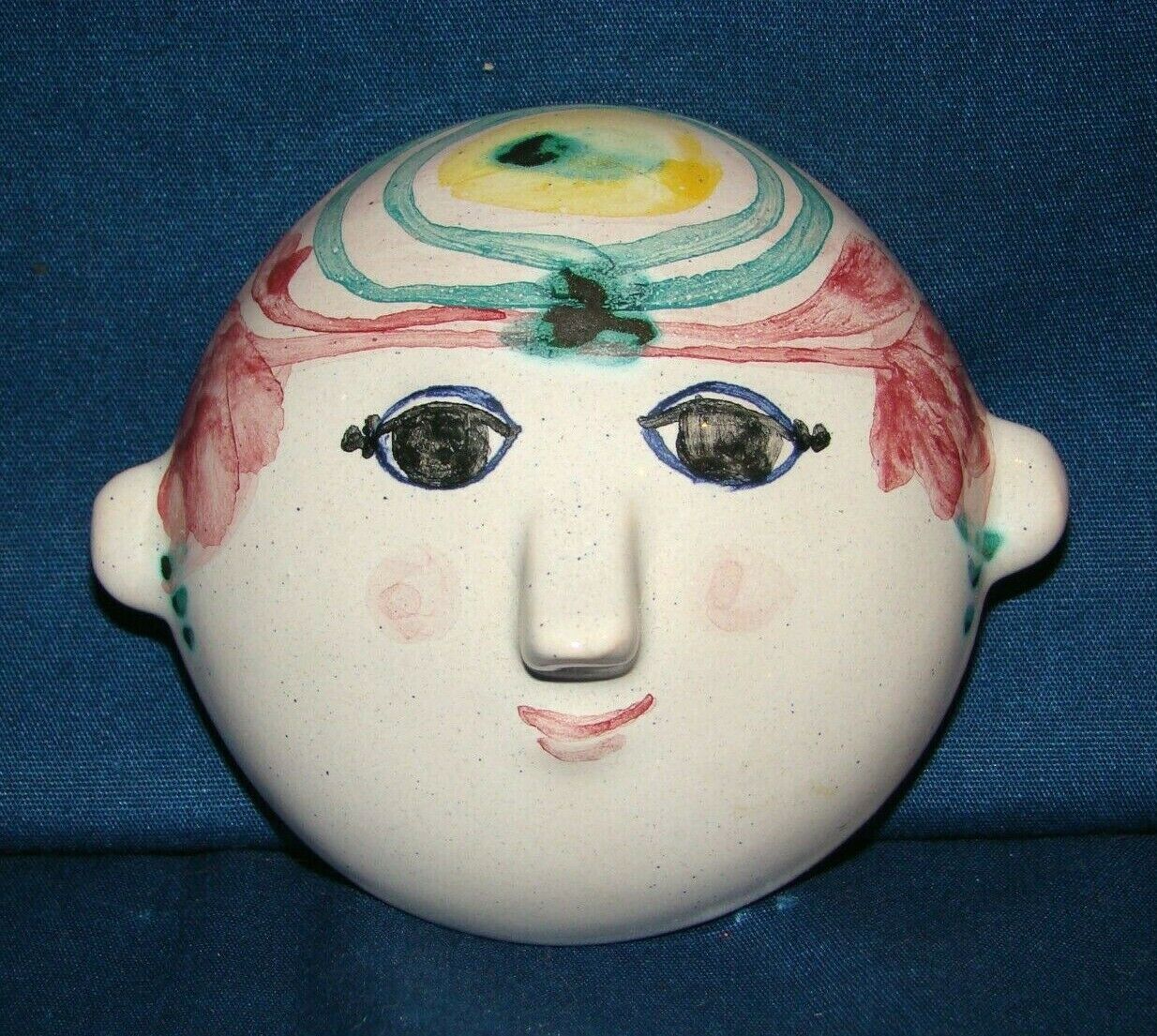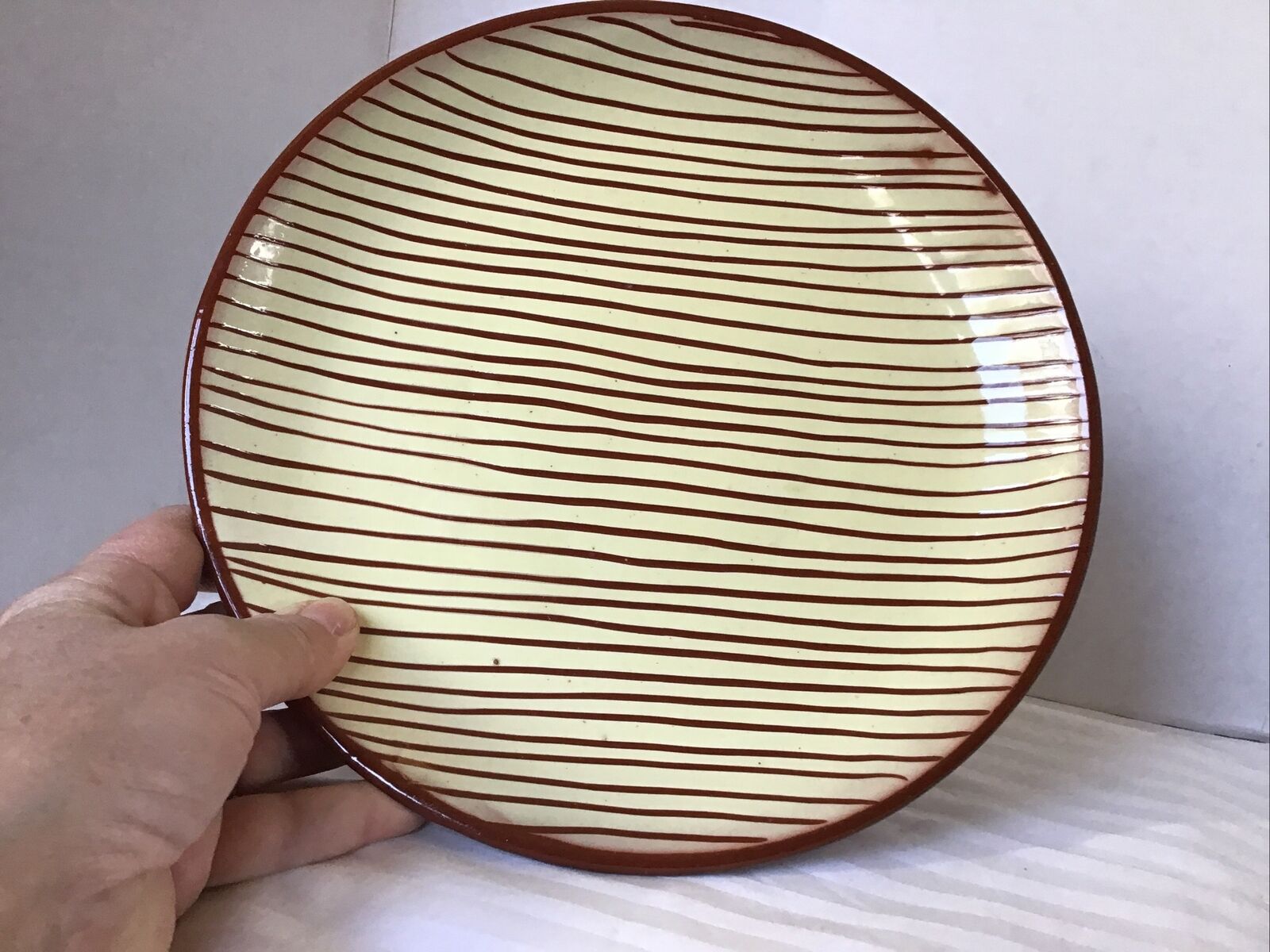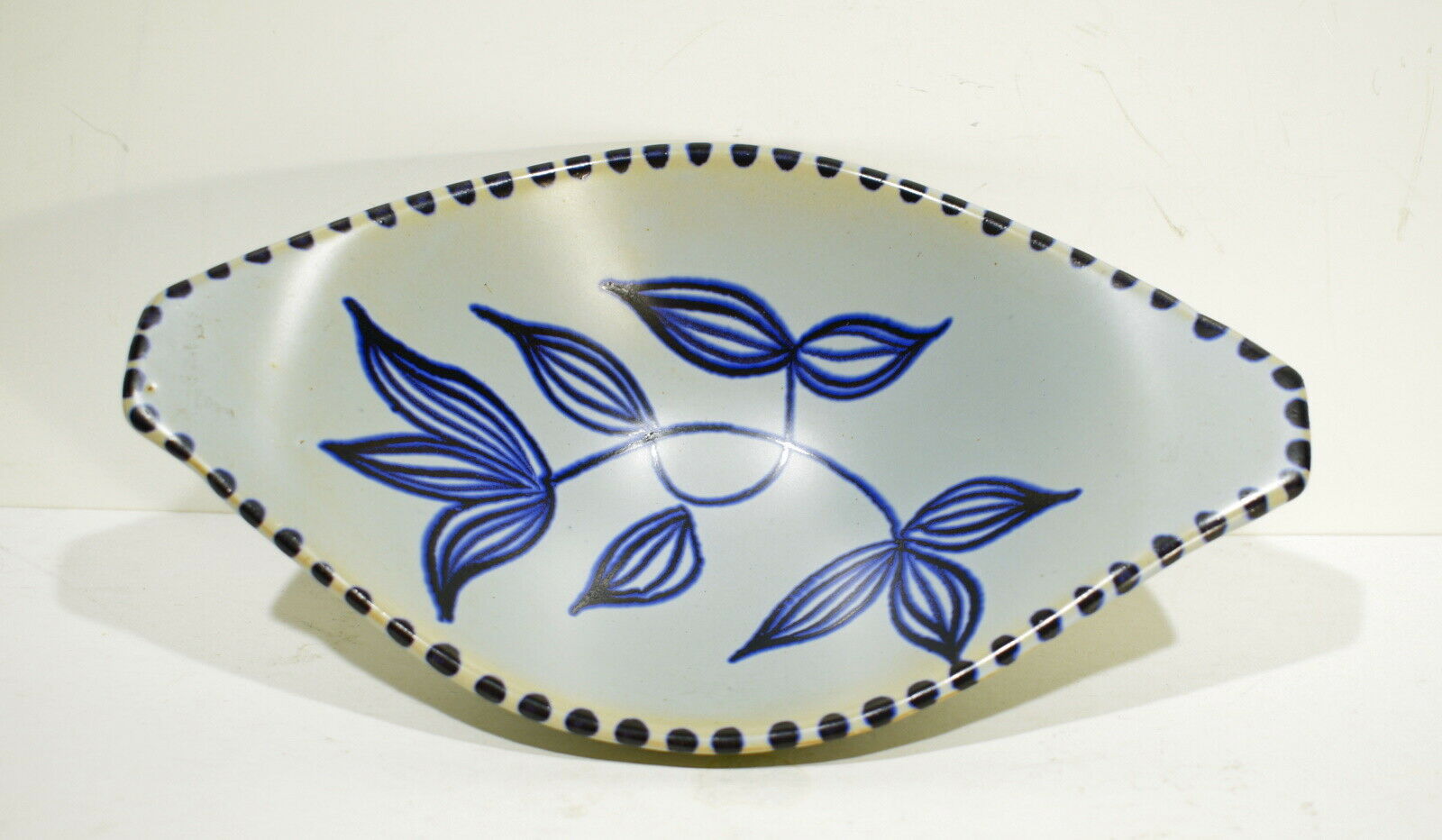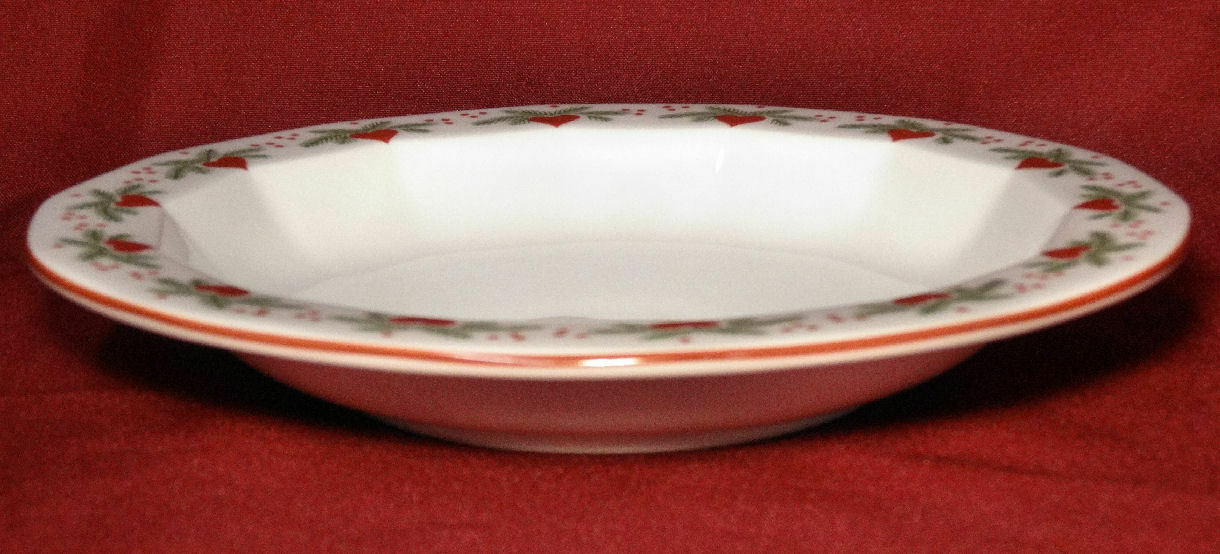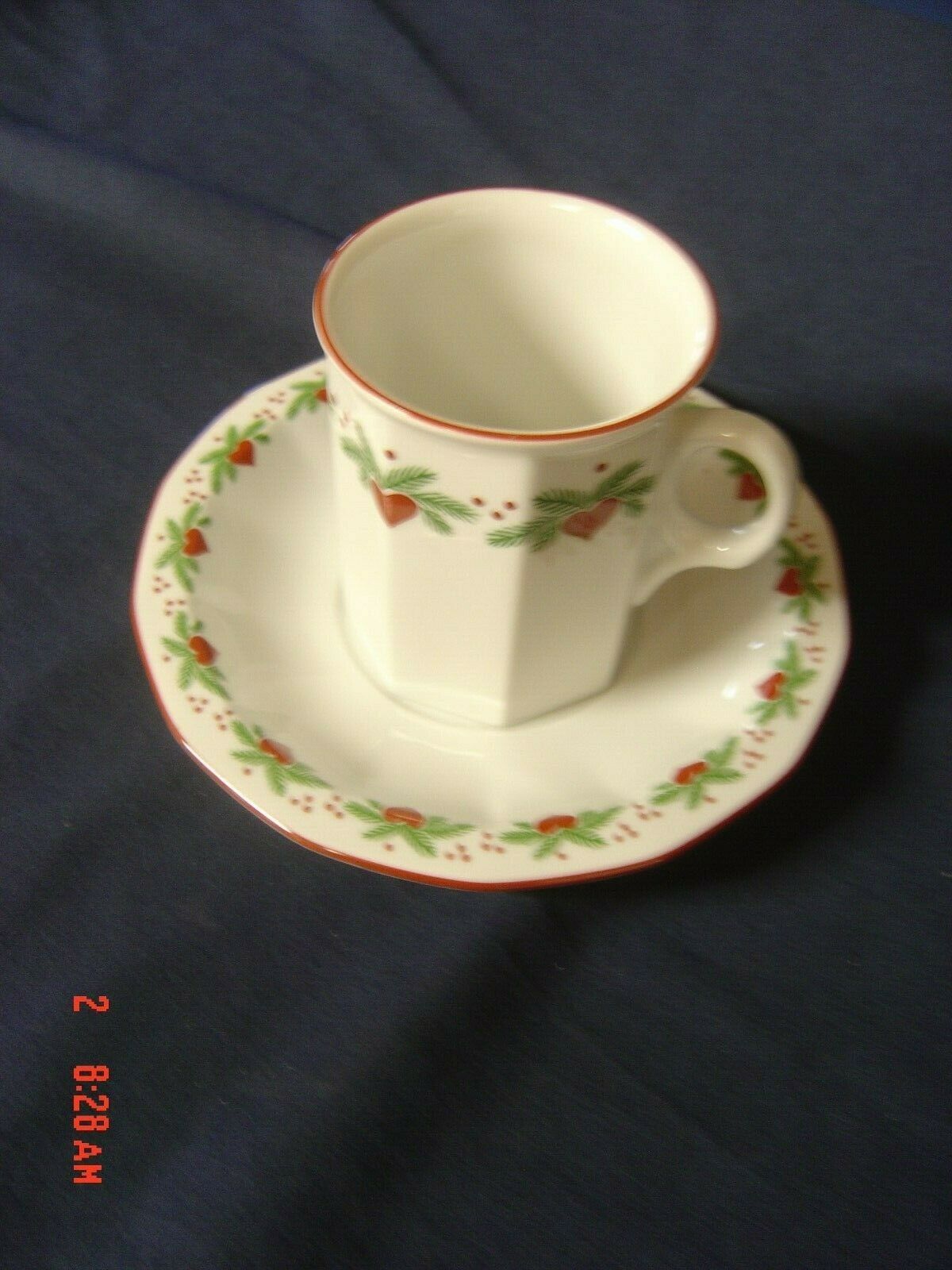-40%
LISA LARSON Two Bowl Harlekin Gustavsberg Sweden
$ 155.76
- Description
- Size Guide
Description
Two ceramic bowls with man and horse designed by Lisa Larson for Gustavsberg. Width approx. 20 cm. The Harlekin series, 1960's. Used but no chips, cracks or restoration, condition as shown in pictures. If you have any questions please don't hesitate to ask before placing your bid.Lisa Larson and her pottery are renowned representatives of the illustrious Swedish ceramic design of the 20th century. She is well known for her warm-hearted, humorous and sometimes subtly ironic design. Lisa worked for the Gustavsberg factory in 1954-1980. She is represented at the Swedish National Museum of Art and Design.
Lisa Larson (born Alhage) was born in 1931 in Härlunda in the south of Sweden. Her father ran a sawmill and was a passionate art love. He often returned from business trips with new works of art for the family home.
During her childhood, Lisa developed a great interest in creating with her hands. She designed clothes, painted the surroundings, and carved wooden figurines from materials from her father's sawmill. A summer guest during her late teens would unexpectedly affect her future.
During her adolescence, Lisa Larson had the ambition of becoming a fashion designer. (That was instead the fate of her sister, Titti Wrange.) But when Lisa started the ceramics program at the College of Crafts and Design in Gothenburg, she found her place in life.
After the lessons, she happily stayed in the workshop for free creation at the turntable. After a year in Gothenburg, Lisa met the love of her life at a Christmas bazaar. It was Gunnar Larson – a young man with a fondness for dressing in black from the city's art college, Valand.
At the end of the five-year education, Lisa participated in a Scandinavian art competition. Her contribution was a cinnamon-brown vase with a carved decor. One of the jury members was Stig Lindberg, the artistic leader of Gustavsberg's porcelain factory. He was impressed by her vase and later offered her a one-year trial at the factory. Lisa, however, had long dreamed of free artistic life in her own studio.
Lisa Larson began her professional career at Gustavsberg during the glory days of Swedish design. Artists were employed in prosperous manufacturing industries which designed everything from furniture and textiles to plastic and stainless steel. The public's interest in good design was broad and strong.
The Gustavsberg factory at Värmdö outside Stockholm was one of the leading ceramic manufacturers in the Nordic region. When Lisa and Gunnar arrived, there were already many prominent artists in place, such as Wilhelm Kåge, Berndt Friberg and Stig Lindberg. The young couple was housed in a simple room with kitchenette and shower access at a short distance.
Lisa Larson and the other young artists had great creative freedom during the year. They were placed in "the Playhouse" as the studio for the new talents was called. Stig Lindberg took on a mentor role for the group, and he often visited the studio to discuss their work.
Lisa Larson's was hired after her year trial period. She quickly became one of the more prominent designers. Her figurines often represented people and animals with soft and swelling shapes. The expression was warm-hearted, humorous and subtly ironic.
One day in the middle of the 1950s, Lisa modeled a cat with the tail straight up in the air. The cat was made of dark brown stoneware with carved stripes. This modernist figurine was followed by two other cats in the same style, typical for the period. They later became part of the series "Small Zoo", her first successful series at Gustavsberg.
During the Gustavsberg years, Lisa discovered the possibilities of the stoneware material. This type of clay can be burned at a higher temperature so that it sinters (vitrifies). The result is a durable and waterproof ceramic material.
Lisa almost always mixes stoneware with chamotte, which is finely crushed burnt clay. The clay was developed at Gustavsberg's laboratory according to her wishes. The chamotte stoneware gives the objects the grainy and rustic look that characterizes Lisa's design.
Lisa has designed countless women in her serial production and unique art. The most famous are undoubtedly the ABC girls from 1958. The five figurines with curvy shapes all have names that begin with A to E. The variants with the floral chromo print are more unusual and highly sought after among collectors.
In Lisa's ABC girls, inspiration from buxom antique fertility goddesses such as the famous Venus of Willendorf can be seen. The lush forms of the girls clearly contrasted with the thin beauty ideal of the 1950s. A few critics turned up their noses, but the series quickly became a success among the public at large.
Lisa Larson is best known for her figurines, but she has also designed a lot of art ware such as vases and bowls. During the years 1956–1964, her serial production included a large amount of art ware. In the series Varieté, Advent, Granada, Tarragona, Thalia, and Karolin, vases, and bowls were accompanied by candlesticks, ashtrays and mirrors. The decors were often carved or in colors typical of the time period, and feature geometric patterns. Motifs were often drawn from the human and animal world with stylistic features.
Lisa's unique production from the period also contained many vases and bowls. They were many times handmade by chamotte stoneware in traditional shapes. The uniqueness was often carved with glazed parts in muted colors. The larger vases with intricate designs are popular with today's collectors.
Lisa Larson's figurines are usually archetypes. On a few occasions, however, she has portrayed specific people and literary figures. For example, her pieces Johanna in the series "Larson's kids" (1961) and Astrid Lindgren's "Pippi Longstocking" (1967).
Lisa's most famous portrait is, however, the then Minister of Finance Gunnar Sträng in 1972. The figurine was suitably designed as a money box with a coin slot but without the opportunity to take the money out. "What Sträng receives, he retains," as the finance minister is claimed to have said. The money box became a big seller and is today a common item in second-hand markets.
During the 1960s and 1970s, ceramics adorned the walls of many Swedish homes. Between 1959 and 1977, Lisa Larson designed approximately 50 wall plates for serial production. The vast majority were made with relief, a rustic expression and motifs with animals or people. The decorators were often given great freedom, which made for a large variety of color schemes. During the period Lisa also designed wall plates for several organizations.
Lisa Larson is strongly associated with her large number of cats, both domestic cats, and wild lions. Over the years, Lisa designed six lions and almost thirty cats have been designed for Swedish serial production. The roundest of the figurines were created at the turntable.
The 1970s meant tougher times for the Gustavsberg factory. Because of worsening working conditions, Lisa Larson left the company in 1980. For the next decade-plus, she would try her luck as a freelance designer.
During the period, Lisa worked for Swedish companies such as Duka, Höganäs, Royal Krona, Kooperativa Förbundet, Åhléns, Sandbergs and Jie Ceramics. She also worked for the German companies, Goebel and Rosenthal.
Standard shipping, postage includes packing - all items will be packed very well. Handling time 15 business days or less. The price does not include additional taxes in your own country.






